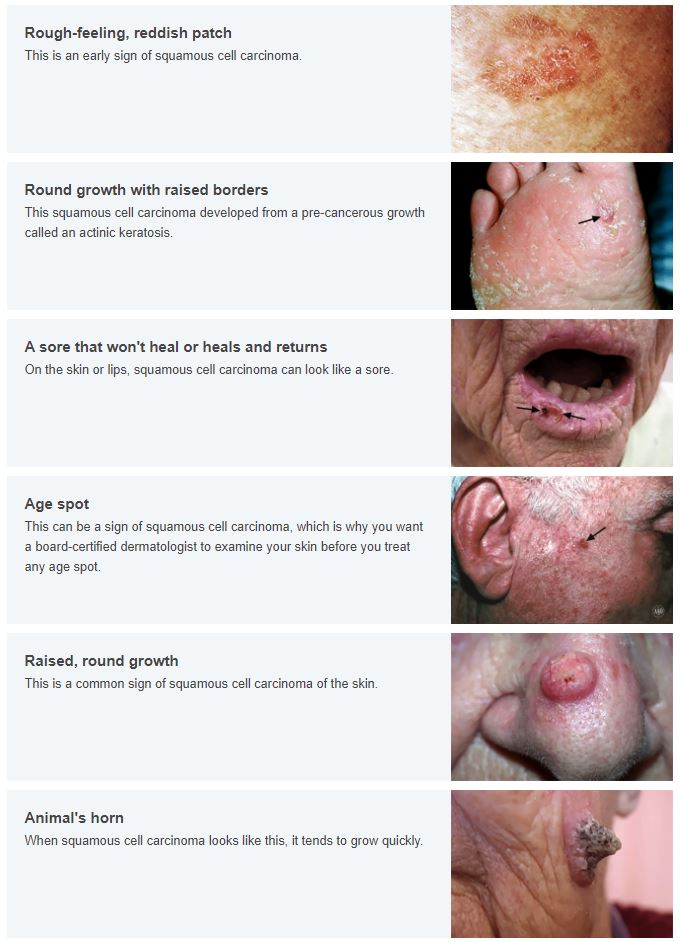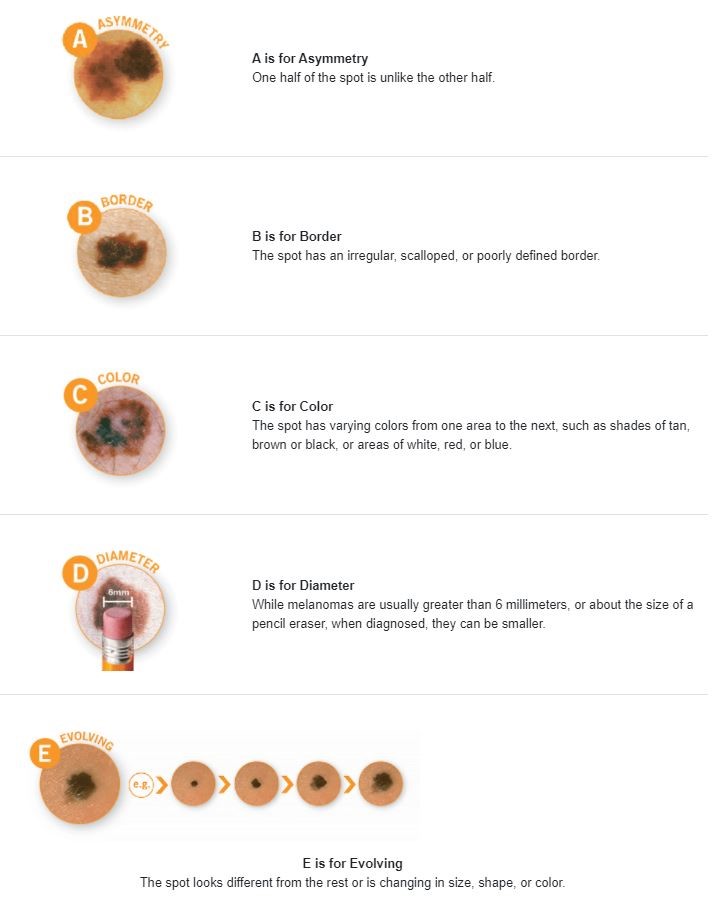MI Skin Dermatology Center: Melda Isaac, MD
Two Lafayette Centre
1133 21st Street NW, Suite 450
Washington, DC 20036
Phone: (202) 393-7546
Monday–Friday: 8:30 a.m.–4 p.m.
Skin Cancer
Skin cancer is one of the most common forms of cancer, but luckily is also one of the most easily treatable if caught early. It’s important at all ages to protect yourself from the sun, avoiding overexposure and wearing sunscreen every day. If you are in the sun a lot, regular screenings for cancer are valuable in order to catch any skin abnormalities before they spread or become worse.
Ask Dr. Isaac or Dr. Yanes for their recommendations on sunscreens and sun precautions.
Skin cancer is one of the easiest cancers to prevent. Skin cancer can be caused by natural and artificial sun exposure (tanning beds!) in addition to radiation, so it is most commonly found on the face and sun exposure areas of the body. Unfortunately, it can also occur on other areas of the body not regularly exposed to the sun, so it is important to have your skin checked regularly. Our providers recommend self-skin examination once per month and at least an annual check by a dermatologist, depending on your risk factors.
Sun damage is the most common cause of skin cancer due to the exposure of skin to ultraviolet (UV) radiation. You can reduce your risk of skin cancer by limiting or avoiding exposure to the sun and avoiding UV tanning beds.
As long as it is caught early, skin cancer is typically highly treatable.
There are three main forms of skin cancer, which include squamous cell carcinoma, basal cell carcinoma, and malignant melanoma. The first two are rarely life threatening and can be treated fairly easily, while malignant melanoma is the deadliest form. Melanoma can spread quickly throughout the body if not caught at an early enough stage. This is why it is important to get skin cancer screenings regularly, and if you spot an irregular dark spot or new mole on your body, get it immediately examined by a board-certified dermatologist.
Pre-cancerous lesions can be easily treated through cryosurgery, topical chemotherapy creams, lasers, chemical peels, or PDT (photodynamic therapy). If skin cancer reaches a later stage, it may need to be surgically removed. The best way to deal with skin cancer is to prevent it in the first place, but the earlier cancer is caught, the easier it is to get rid of it.
Risk Factors for Skin Cancer
Along with sun exposure, tanning booths can also increase your risk, as well as exposure to radiation and high altitudes. Keep a close eye out for any changes in the skin, especially dark spots or changes to moles. If you find any abnormalities in your skin, alert your doctor immediately so that tests can be performed to determine if skin cancer is present. The earlier it is caught and treated, the better the success rate for treatment.
Other risk factors for a higher chance include having fair skin, hair and eye color. However, people with all skin types are at risk. A history of intense and frequent sunburns, as well as a history in the family, may mean that you are at higher risk for skin cancer. Remember, anyone can develop this condition at any age.

Treatment Designed
Exclusively for You
At MI Skin Dermatology, we believe your skin deserves more than just a menu of standard med spa treatments. Dr. Isaac and Dr. Yanes craft a personalized plan tailored to your unique goals and skin needs. Through in-depth skin assessments and years of expertise, treatments are layered and thoughtfully sequenced over time to amplify your skin’s health and radiance. This refined approach ensures you look and feel your best—now and for years to come.
Explore Customized TreatmentsTypes of Conditions
There are three basic forms of skin cancer: basal cell carcinoma, squamous cell carcinoma and malignant melanoma. Each of these skin cancers has a different look and requires different treatments, so it is vital to talk to Dr. Isaac, Dr. Yanes, or another doctor if you experience any abnormal skin conditions.
Basal Cell Carcinoma
Basal cell carcinoma is the most prevalent form of skin cancer. It appears as an irregularly shaped blemish or blister that crusts over or bleeds without healing. In some cases, this cancer can cause the lashes of the eyelids to fall out. While this form of cancer is rarely life threatening, failure to treat it in a timely manner can cause serious damage to your tissue and bones.

All rights reserved.
Squamous Cell Carcinoma
Squamous cell carcinoma often originates on the face and surrounding areas. It can appear as waxy or shiny patches or as small red or white bumps on the skin. If not treated, it can spread to the internal organs and become a life-threatening condition. Squamous cell carcinomas of the lip and ear can be more aggressive.
If you see a spot that is not healing, get it checked by a dermatologist!

All rights reserved.
Malignant Melanoma
Malignant melanoma is by far the deadliest form of skin cancer. This form of cancer generally begins within a preexisting mole. While it occurs less frequently than the other forms of skin cancer, it is more dangerous because, if not treated quickly, it can spread throughout the entire body and can become fatal. Some melanomas can arise de novo as a “new” pigmented lesion. If you see a dark spot with Assymetry, irregular Borders, varying shades of Color, a Diameter greater than 6 mm, or Evolving or changing lesion, don’t delay, get it checked!

Reproduced with permission from the American Academy of Dermatology. Copyright ©2021.
All rights reserved.
Skin Cancer Treatment Options
In situations where the cancer is relatively small, Dr. Isaac or Dr. Yanes in Washington, DC will surgically excise or destroy the cancerous growth and then reconstruct the area. If the cancer is detected very early, a topical cream can be offered. In more extreme cases, where the cancer is larger or has spread to other areas of the body, measures such as cryosurgery (where the cancer is frozen) or radiation therapy may be recommended. In addition, chemotherapy and Mohs surgery (in which the cancer is taken off in layers while frozen sections are examined to ensure the cancer is removed completely) have been successful in eradicating cancerous cells.
The important thing is to contact your doctor or MI Skin Dermatology in Washington, DC immediately for a consultation if you feel that you are showing symptoms of any of these conditions. After surgery, it is important to carefully check your skin regularly for recurrences, and you should visit your doctor regularly for routine exams.
Treatment of Precancerous Lesions
Photodynamic therapy, or PDT, can be used effectively to treat precancerous lesions on the skin. PDT is a type of laser treatment that has been shown to treat many kinds of irregularities, including precancerous lesions. PDT is a mild treatment that usually lasts around an hour and a half, but is highly effective. There has been research into using PDT for internal cancers, but for the moment it is only proven effective for precancerous lesions.
If you have questions about skin cancer treatment, please visit our skin cancer FAQ page.
Schedule a Consultation Today
If you have noticed any irregularities in your skin that could potentially be cancerous, please don’t hesitate to schedule a consultation with a leading dermatologist, like Dr. Melda Isaac and Dr. Daniel Yanes! To find out more information about and make an appointment at MI Skin Dermatology Center in Washington, DC, call (202) 393-7546 today!
About Our Doctors
Dr. Melda Isaac and Dr. Daniel Yanes are consistently recognized among the top dermatologists in Washington, DC. Our board-certified dermatologists provide both medical and cosmetic dermatology services with professionalism and compassion. Their specialized expertise in injectables and an eye for creating natural-looking results have made them a sought-after source for excellent dermatological care.




